by Michael Smith (Veshengro)
Amish people and communities are unique in many ways, and their “Christian” doctrine and beliefs shall not be to discussion here for we can degree or disagree with them.
 To most outsiders, they are known mostly as soft-spoken people who live a simple life, don’t use (mains) electricity, have no telephone (inside the house) and don’t drive cars. I have put some aspects here in brackets for the Amish are not just one entirely homogenous group with the same set of rules. Some allow electricity, as long as it is not from the grid, which means they may use generators, solar or wind, or other means of generating it, in the same way that some will not have a telephone at all while others simply will not permit one in the house and thus have an outhouse with a phone.
To most outsiders, they are known mostly as soft-spoken people who live a simple life, don’t use (mains) electricity, have no telephone (inside the house) and don’t drive cars. I have put some aspects here in brackets for the Amish are not just one entirely homogenous group with the same set of rules. Some allow electricity, as long as it is not from the grid, which means they may use generators, solar or wind, or other means of generating it, in the same way that some will not have a telephone at all while others simply will not permit one in the house and thus have an outhouse with a phone.
They’ve also had just enough bad press to make some people wary. No matter what your opinion of their beliefs, the traditional Amish lifestyle offers some (financial) advantages that anyone might consider adopting. Obviously, some adjustments involve sacrifices and commitments that not everyone is going to want to make, but the principles can still help you find ways to save. Here are some lessons to be learned from these “plain people”:
Sometimes “Need” really means “Want”
Most people cultivate a sense of need for things they could live without. Since most aren’t driven by a culture that abhors amenities, it can take a financial crisis to help a person realize what he or she can give up. How many times have you said, or heard said something like, “A person has to have some comforts.” to justify that second television, or a luxury car, or something similar? If saving money is your goal, take a look around and figure out what the real necessities are.
As I have said more than ones in my many writings on the matter of needs and wants is that many of our perceived needs are but wants, more often than not created by advertising.
Simple is good
In many ways, the things we spend extra money on either complicate our lives or end up costing more in the long run. A self-propelled lawnmower doesn’t cut grass any better; it’s just easier and has more moving parts to replace. A brisk hike in the fresh air is just as effective as that 30 minute stroll on an expensive treadmill and you’ll enjoy it more. Manual hedge clippers are half as expensive as electric, less noisy and give your arms some exercise.
Simplicity is also making a comeback with technology in many instances with a retro-trend as far as cell-phones are concerned, for instance, where a fair number of people have begun to abandon the smartphones for the older forms of mobile telephones which were just that, mobile telephones.
When it comes to simplicity there are many aspects of our lives that would benefit from being simplified again and that also includes our reading and our filing and whatever else.
Pen, pencil and paper still have their place and in fact the place is getting bigger again as there are also many people who are returning to the real letter and to using pen and paper for taking notes and also storing hard copies of stuff rather than keeping it digitally on some media or even “in the cloud”.
There are many other things in our lives that also benefit from being kept as simple as possible as to complicate things often makes things more expensive and when something goes wrong with them makes them, nowadays, (almost) impossible to fix, to repair.
Grow your own
I know, not everyone can raise livestock or big crops, but most of us can grow a few vegetables or herbs, even if they’re of the miniature, indoor variety. You’ll save some money and get better tasting, healthier produce, too.
It is possible to grow your own in the smallest of places, as Vertical Veg proves on his site and in his courses. You do not have to have acres of land on which to grow healthy vegetables for yourself (and your family). Even a small balcony can provide at least some.
In addition to that, if you don't have the space to grow the amount that you think you want to grow or need to grow, there is always the possibility to have an allotment garden (though the waiting lists are rather long in many places in Britain). In other countries those plots go by different names but in essence it is all the same.
Many hands make light work – and less expense
When big projects arise in an Amish community, family and neighbors pitch in to get it done. Granted, if you live in the city, a barn raising is pretty much out of the question, but that doesn’t mean that family and friends can’t pitch in to mend that back fence or build a deck. Building codes in most cities will allow a homeowner to do their own home improvements and “employ” someone to help. You’ll need a permit for most work, and there will be inspections, but if you can’t afford a contractor, some free meals and maybe a case of beer might go a long way toward paying your friends.
But not everywhere is it that strict as in the Land of the Free, which does not seem to be as free as it is always made out to be. In some countries you can pretty much do a great deal more though a permit for extensions and such like may be required or for outbuildings on your property.
Craftsmanship isn’t about expensive tools
The reputation of Amish woodworkers is based on attention to detail, patience and secrets handed down through generations. Many of their tools are hand-made. You’re probably wondering what that has to do with saving money. It’s simple. Photographers can create awesome images without the top-of-the-line DSLR. Web developers can create great sites without owning the latest computer or software. Whatever you do, don’t get caught up in needing the biggest and best. Be the master of the tools you own and save some money.
Take care of your tools
Keeping the tools of your trade longer doesn’t mean letting them fall apart. Any skilled craftsman knows that without proper maintenance, tools fail. Keeping your equipment in shape means it will perform better, longer. Having to replace them because of premature failure isn’t cost-effective. Therefore, buying good tools, which may be a little more expensive than the cheap ones, are a much better investment than buying cheap ones that fall apart after only a short while.
Also, you don't have to buy new tools. Look for old quality tools that, with a little TLC, can be rescued and resurrected to outperform any new modern tool. This is because old tools were made by craftsmen who knew what the craftsmen who were going to use demanded in quality.
Quality is worth the investment
One of the reasons Amish furniture is in such high demand is that it lasts. Because of the meticulous construction methods and hand-selected materials, many Amish pieces become heirlooms. Sometimes saving money means paying a little more for something that you’re not going to be throwing away soon. Naturally, this applies to much more than furniture.
A handmade wooden spoon, a handmade knife, or other goods and products made lovingly with care to ensure that they last for several lifetimes are a much better investment than something that has built-in obsolescence and will break or otherwise no longer function in less that three years.
The biggest problem that we have today and why things don't last is the built-in obsolescence, designed by the manufacturers (and, dare I say, governments) so that we have to buy new every few years (to keep the economy growing) and that almost nothing made today can be repaired (easily and cheaply). When repair is more expensive than buying new then something has seriously gone wrong with our society, and that is the case today. Often spare parts can be more expensive than a new product and that just does not make sense at all.
Make the most of resources at hand
To an Amish farmer, a cow is a source of dairy products and fertilizer. A grove of trees can provide building materials, but needs to be managed well, because it also produces game for the dinner table, as well as other natural foods. Crops are rotated carefully to optimize soil condition and help control crop disease. Careful resource management helps Amish communities sustain themselves with little help from the outside. We can all save money by learning to manage, recycle and repurpose what we have.
Reuse and repurposing is also something that you will find on every Amish farm and it was – I stress the word was – commonplace once on every farm, homestead and the majority of homes everywhere.
To a degree, this is true, it was due to the fact that finances were tight and thus you did not just “pop out to the stores” to buy something or order it from a catalog or today on the Internet.
You did not goo out and buy glass storage jars; you used those that cam with stuff you bought. The same went for drinking glasses. You repurposed glass jars for those. Empty tin cans became pencil bins, scoops for chicken feed and soil for potting, and the list goes on and on. Other things were made from scrap wood in simple DIY fashion or more elaborate even.
Get the Most Out of What You Have
Those horse-drawn prams the Amish are so well known for are also handed down, and repaired or reconditioned many times over. So it is with their other possessions. The basic principle is that if something serves its purpose, it doesn’t need to be replaced. Imagine how much money you can save by keeping your car a few years after it’s paid off. How about refinishing the dining table instead of replacing it? Make what you own last a little longer and you’ll save.
The old adage from America “If it ain't broke don't fix it”, to a degree embodies this in that, if it is not broken and works well then do not replace it but keep using it and if it is broken and repairable then do so. It is worth it in the long run for (1) it more than likely saves you money and (2) as it has been working for a long time it will, repaired, work for another long while.
The Amish and other frugal folks also look after their belongings in a different way than do many of our contemporaries today. They do not seem to care that they have, for instance, lost something during a visit to the local park, as an example, and as I find on an almost daily basis, and go back to retrieve. They rather go and buy a new one. This is something that is so alien too me that I just cannot comprehend it.
Gifts Don’t Have to Break the Bank
Traditional Amish gifts for birthdays, etc. are simple, practical items and usually singular. A tool or an item of clothing is typical. More often than not handmade also. This was also the way when I was growing up, whether for birthdays, or other occasions. Bought gifts were very rare indeed.
While there’s no need to adjust your gift giving quite that radically, it wouldn’t hurt to consider buying one very thoughtful gift instead of a dozen expensive ones.
When it comes to surviving hard times, the Amish have sustained their culture and communities in North America for centuries, while relying mostly on themselves. What better example for those of us trying to provide for ourselves and our families in today’s economy?
© 2014
 A clinical trial involving nearly 300 men and women in one of China’s most polluted regions has found that daily consumption of a broccoli beverage helped excretion of benzene, a known carcinogen, and acrolein, a lung irritant
A clinical trial involving nearly 300 men and women in one of China’s most polluted regions has found that daily consumption of a broccoli beverage helped excretion of benzene, a known carcinogen, and acrolein, a lung irritant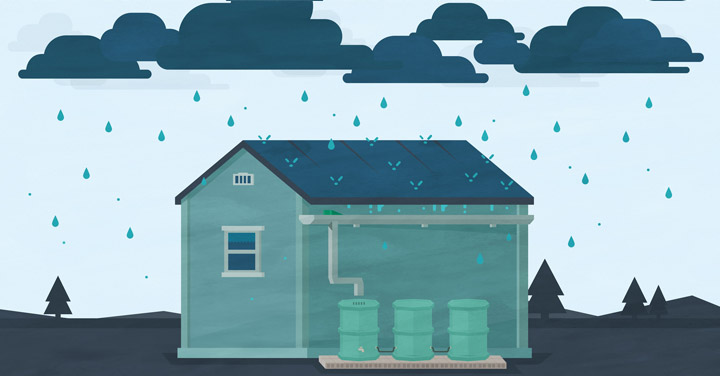 (and How to Do It)
(and How to Do It) According to psychologists, dance can not only help improve our mood and fitness, it can aid creativity and make us feel more alive. Jini Reddy discovers how even novice dancers have no excuse not to get their bodies moving
According to psychologists, dance can not only help improve our mood and fitness, it can aid creativity and make us feel more alive. Jini Reddy discovers how even novice dancers have no excuse not to get their bodies moving Amish farmers avoided the draft during WWII, even choosing to face jail time over going to war because they didn’t believe in combat, and now they are taking up a different fight altogether – peacefully – by studying plant immunology in order to grow healthy organic produce without pesticides, herbicides, and other harmful chemicals that biotech companies are lavishing on crops like cheap perfume on an uncouth lady.
Amish farmers avoided the draft during WWII, even choosing to face jail time over going to war because they didn’t believe in combat, and now they are taking up a different fight altogether – peacefully – by studying plant immunology in order to grow healthy organic produce without pesticides, herbicides, and other harmful chemicals that biotech companies are lavishing on crops like cheap perfume on an uncouth lady. This summer, we reported on the story of a Minnesota man named Jay Nygard,
This summer, we reported on the story of a Minnesota man named Jay Nygard, 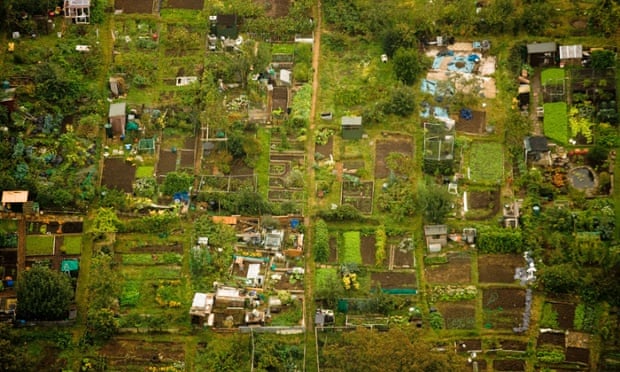 Allotments are the best habitat for bees according to the results of the first
Allotments are the best habitat for bees according to the results of the first 


 If you are anything like Jen, you might spend a reasonable amount of time thinking about food-what to make, new recipes to try out etc etc.
If you are anything like Jen, you might spend a reasonable amount of time thinking about food-what to make, new recipes to try out etc etc. Food expiration dates are for wussies. No seriously, they’re really not that important. Dates on labels like “best by,” “best-before,” or “enjoy by”
Food expiration dates are for wussies. No seriously, they’re really not that important. Dates on labels like “best by,” “best-before,” or “enjoy by”  "It is not hopeless."
"It is not hopeless." A new,
A new,  Get Acquainted
Get Acquainted 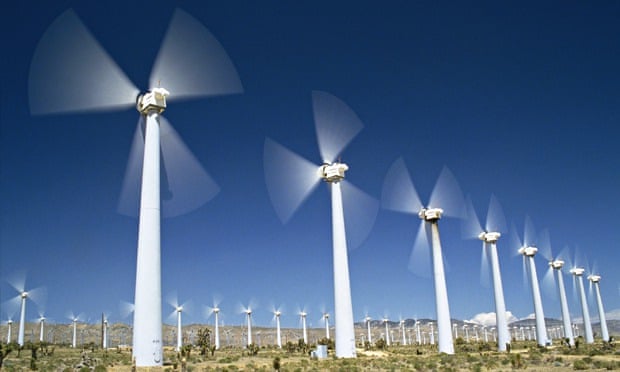 Could a long-vacant cigarette factory in North Carolina build the rechargeable battery that will unlock the future of the clean energy economy?
Could a long-vacant cigarette factory in North Carolina build the rechargeable battery that will unlock the future of the clean energy economy? Mom and dad, cover your eyes. Now that my
Mom and dad, cover your eyes. Now that my 
 ROME, Oct 17 2014 “Who is more concerned than the rural family with regards to preservation of natural resources for future generations?”
ROME, Oct 17 2014 “Who is more concerned than the rural family with regards to preservation of natural resources for future generations?”
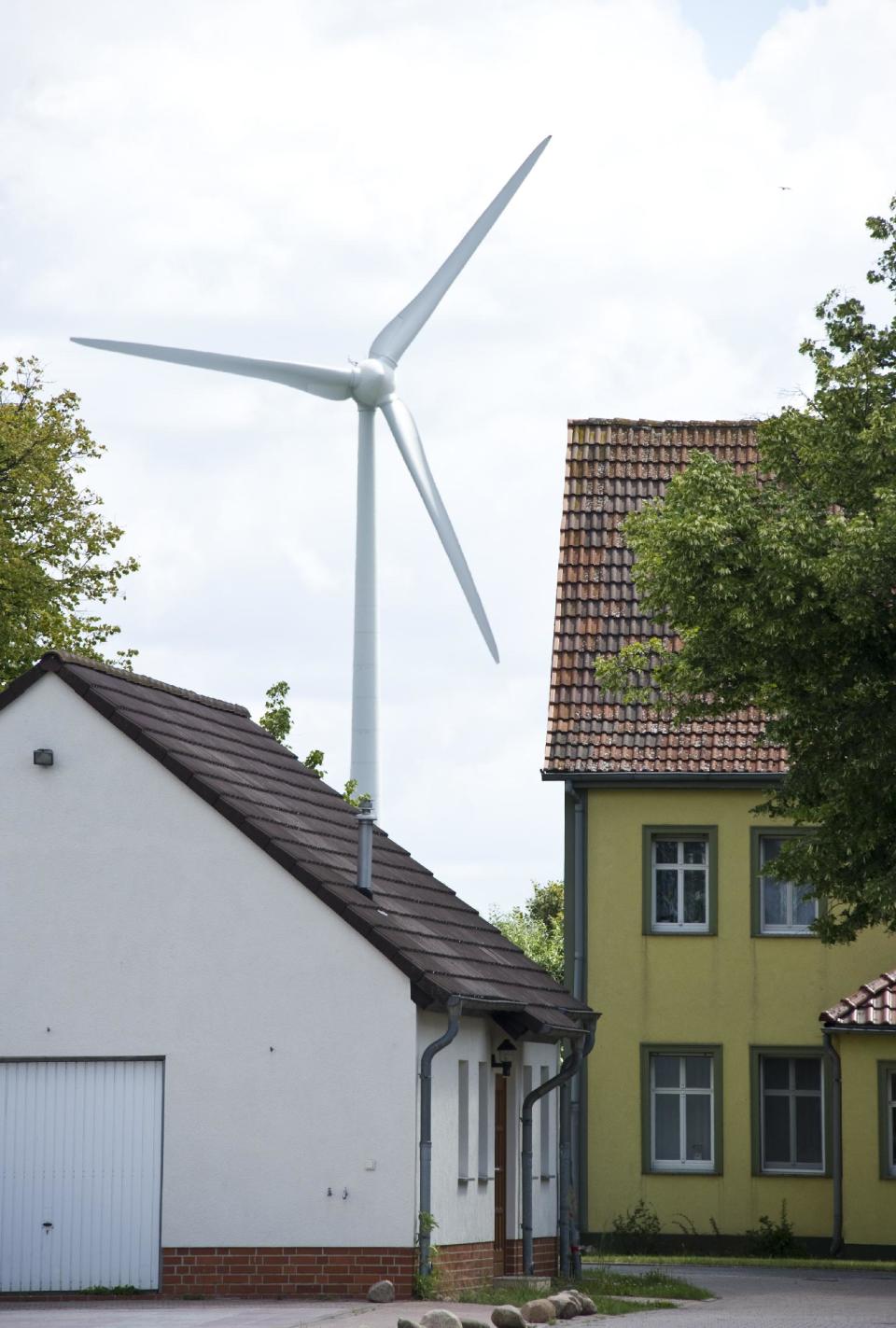 Feldheim (Germany) (AFP) - If Germany has taken a pioneering though risky role in shifting to renewable energy, then the tiny village of Feldheim -- population 150 -- is at its vanguard.
Feldheim (Germany) (AFP) - If Germany has taken a pioneering though risky role in shifting to renewable energy, then the tiny village of Feldheim -- population 150 -- is at its vanguard.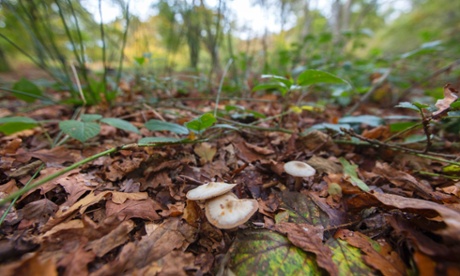 “Here we go – this is one of the really nasty ones,” says Jeremy Dagley, pointing at the cappuccino-coloured cap of a two-inch mushroom nestled in the coppery leaf litter in
“Here we go – this is one of the really nasty ones,” says Jeremy Dagley, pointing at the cappuccino-coloured cap of a two-inch mushroom nestled in the coppery leaf litter in  Cultivating something old, but new to our gardens, is a wonderful way to connect with our ancestors—or in this case, with our “roots.” And daikon, celeriac, salsify, and scorzonera are
Cultivating something old, but new to our gardens, is a wonderful way to connect with our ancestors—or in this case, with our “roots.” And daikon, celeriac, salsify, and scorzonera are  It must be nice to be Dutch: While the rest of us are dealing with
It must be nice to be Dutch: While the rest of us are dealing with  A Worm Tower is basically a length of pipe buried halfway in the ground with holes drilled in the buried part for worms to get in and out. Food scraps are added directly to the tower instead of into your composting bin, and are eaten by worms already living in the target part of your yard. You can add Worm Towers to your full blown vermiculture / vermicomposting regime or just use them by themselves, particularly in raised beds. Several steps and lots of time can be eliminated for some of your composting by simply delivering food waste directly to the worms, directly on to the garden.
A Worm Tower is basically a length of pipe buried halfway in the ground with holes drilled in the buried part for worms to get in and out. Food scraps are added directly to the tower instead of into your composting bin, and are eaten by worms already living in the target part of your yard. You can add Worm Towers to your full blown vermiculture / vermicomposting regime or just use them by themselves, particularly in raised beds. Several steps and lots of time can be eliminated for some of your composting by simply delivering food waste directly to the worms, directly on to the garden.

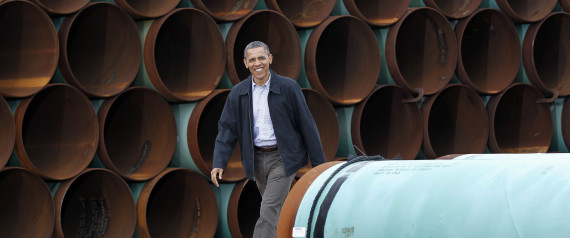 WASHINGTON -– The company that wants to build the Keystone XL pipeline was
WASHINGTON -– The company that wants to build the Keystone XL pipeline was 

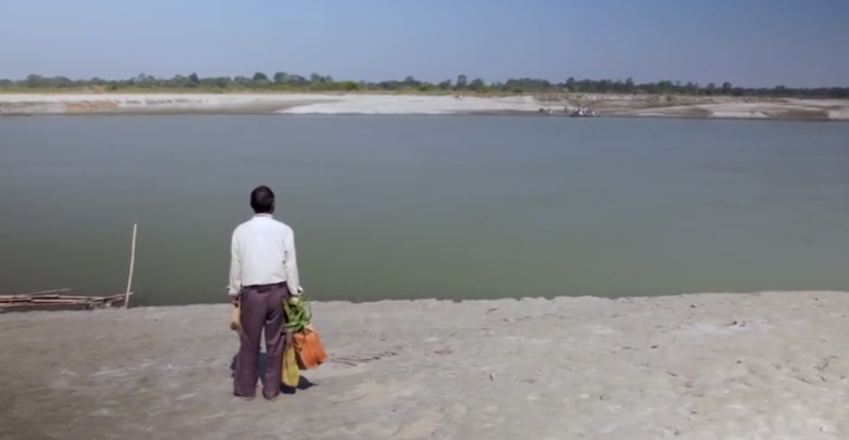 At the age of 17, after witnessing hundreds of snakes dying from drought on his island in India, Jadav Payeng started to grow trees on what was barren land devastated by erosion.
At the age of 17, after witnessing hundreds of snakes dying from drought on his island in India, Jadav Payeng started to grow trees on what was barren land devastated by erosion.
 New research suggests climate models don't give plants enough credit for absorbing excess carbon dioxide from the air. But is the discrepancy enough to make a difference in global climate change?
New research suggests climate models don't give plants enough credit for absorbing excess carbon dioxide from the air. But is the discrepancy enough to make a difference in global climate change?






















